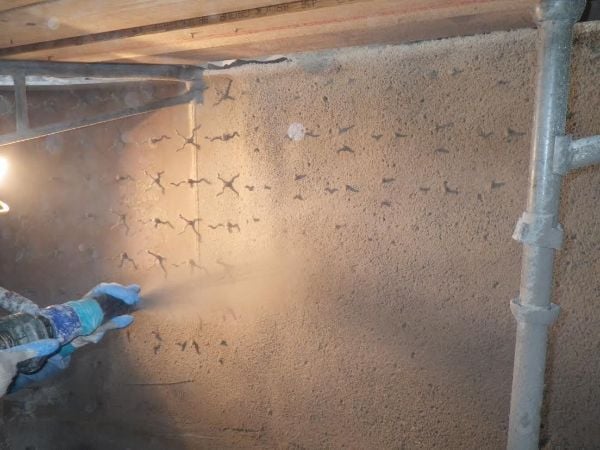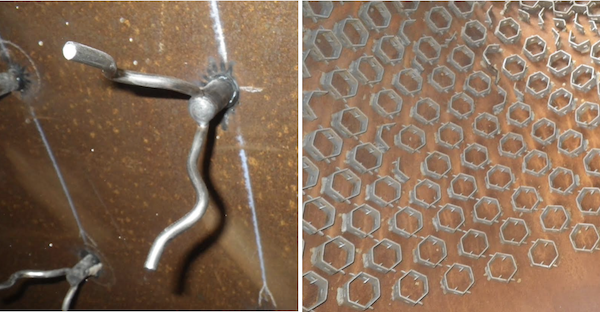Introduction
Welcome to the Refractory unit of the Mechanical Integrity Professional Initiative. Inside this unit, you will learn about the installation, inspection, testing, and repair of refractory linings.
The information in this unit is primarily found in API Standard 936, Refractory Installation Quality Control–Inspection and Testing Monolithic Refractory Linings and Materials (Fourth Edition). In fact, this unit may certainly be used as a study reference for those who are interested in obtaining the API 936 certification. While it is not a replacement for detailed training or the Standard itself, it may provide additional context to help understand and make use of the API 936 body of knowledge.
What is Refractory?
As an oversimplification, refractories are materials that provide resistance to extreme temperatures and/or other physical or chemical influences that may affect a piece of equipment. API 936 defines refractories as “nonmetallic materials having those chemical and physical properties that make them applicable for structures, or as components of systems, that are exposed to environments above 1000°F (538°C). While their primary function is resistance to high temperature, they are usually called upon to resist other destructive influences also, such as abrasion, pressure, chemical attack, and rapid changes in temperature.”
Refractory materials are widely used in various industries to ensure that base metals, such as carbon steel, are protected against damage or deformation that may occur due to exposure to high temperatures, abrasion, or chemical attack. Refractory is commonly used to line the insides of pressure vessels, piping, furnaces, flue gas ducting, and other process equipment.
The Inspectioneering Journal article titled “What Is Refractory?" provides a brief history of the usage of refractories, as well as their usage today:
"Refractory has been used for temperature control since as early as the Bronze Age (circa 4000 BC). During this time, refractory came in the form of a pit dug in the soil that was used to fire earthenware (a low-fired pottery). The soil used was found to be resistant to heat and did not deform, which is the main purpose of refractory. Refractory can be defined as a non-metallic material with both chemical and physical properties that make them applicable for structures exposed to environments above 1000°F.
Today, refractories are used in many different industries around the world, such as: petroleum refining, petrochemicals, power generation, cement, metals and mining, and many more. These refractories are used as a critical component inside high temperature processing equipment. For example, in fluid catalytic cracking (FCC) units in oil refineries, refractory is primarily used for its abrasion and heat resistant properties. It is also used for its chemical and heat resistant properties in other processing units such as sulfur recovery units."
Refractory Materials
Refractory material is installed as a lining on the inside of a component such as a pressure vessel or furnace. It can be thought of as a “protective layer” that exists between the base metal and the operating environment. Refractories come in a wide variety of materials, each of which have their own unique physical and chemical properties. Some different types of refractory are listed below:
- Bricks are installed and sealed with mortar and, as such, typically take longer to install than other types of refractory materials.
- Castable mixes are most similar to concrete in terms of their properties. Just like consumer-grade concrete, castable mixes are mixed with water and then poured into place.
- Ceramic fiber linings come in the form of wallpapers or blankets, which must be held in place by a system of anchors.
- Gunned mixes are similar to castable mixes. However, they are applied with a high pressure air hose that injects water into the material at the nozzle.
- Plastics have a stiff consistency (similar to clay) and are typically installed with pneumatic ramming guns onto the anchoring system. Although their insulating properties are relatively poor, they provide abrasion resistance that makes them useful in erosive environments.
- Ramming mixes are prepared in a similar manner to castable mixes but have the consistency of plastic. As with plastics, ramming mixes are worked into place with ramming guns or hammers.
Anchoring Systems
Refractory material must adhere to the wall of the vessel it is applied to and it must be installed in such a way that it remains in place for a very long time. So, in addition to the refractory material itself, refractory liner applications make use of anchoring systems which help to achieve more or less permanent installations.
Anchors come in many different shapes and sizes and are made of various materials of construction. Different anchoring systems work with the many different types of refractory materials. Some examples of anchors are:
- “Steer horns” or V anchors, which get their nickname from their resemblance to a bull’s horns. These types of anchors have been around for a very long time and innovation has led to newer designs.
- Hex metal anchors of various configurations. For example, hex-metal anchors may be arranged in an offset or center-tab position.
- Hex-alternative systems, which are commonly used during facility turnarounds to perform localized patch repairs to existing hex-metal areas. These systems take the place of installing hex-metal, which is very costly and time consuming during a turnaround.
Image Gallery


















